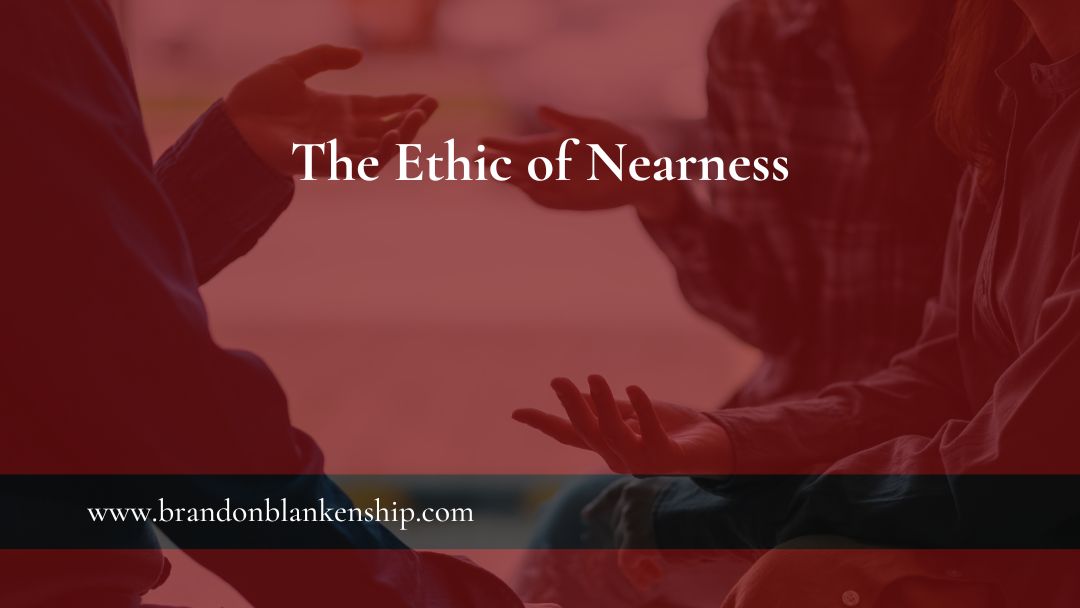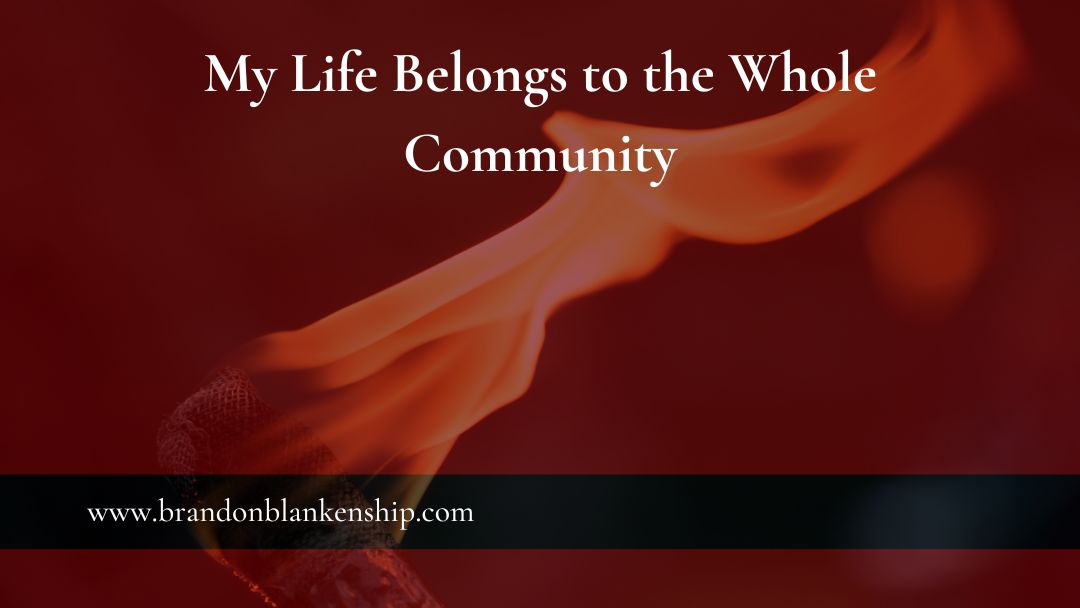
Inviting Human Flourishing Through Building Design
Every great architect is – necessarily – a great poet. He must be a great original interpreter of his time, his day, his age.
-Frank Lloyd Wright
Introduction
My dad built the house I grew up in. We first moved into a long concrete block rectangle with a shed roof topped with tar paper. Having been orphaned early in life, dad would have described it as dry, warm, and safe.
The Baptist churches I grew up attending were not much different. They were built for utility, whatever was required to function. Usually, that meant rectangular buildings with square edges. It often meant concrete blocks. And if those weren’t available, a large circus-like tent would do. It wasn’t until I visited a Buddhist-themed resort that I thought much about the impact that buildings might have on imagination, emotion, or humanity itself. A Trial Lawyers College regional seminar was being held at the retreat and I was reluctant to go. When I did decide to go, a couple of my deacon friends promised to pray for me.
Even though I felt apprehensive when I arrived, the property itself was welcoming. After I checked in, the winding pathway to my room led me past buildings that, somehow, were inviting, comforting. Each garden had something to say – here is where we hang out, here is where we think, or even, this is where we find inspiration. Even now, many years later, I am still asking, “how did a building or garden make me feel that way?”
In case you doubt that a building or landscape design itself might encourage human flourishing, consider that it is near impossible to deny the opposite. The hot box is a form of solitary confinement used in some prisons. It was designed for human withering. It is a small, windowless cell where the temperature can reach up to 120 degrees Fahrenheit, and the air is often humid and stagnant. Numerous people occupy the room. So many at times that there is not enough room to lay down. Showers are rare. One toilet serves them everyone, one toilet that is flushed by officers outside the cell, once a day. The hotbox has been called, “a cruel, inhuman and degrading treatment or punishment.” 1 If the design of the hot box can dehumanize, then there is a type of building design that can humanize, that can promote human flourishing.
What is Human Flourishing
While happiness is important, it is also fleeting. It can be influenced by external factors, such as circumstances or the events that happen to us. Flourishing, on the other hand, is more resilient. It is based on internal factors, such as values, goals, and relationships.
Flourishing itself might be understood as a state in which all aspects of a person’s life are good. We might also refer to such a state as complete human well-being, which is again arguably a broader concept than psychological well-being. Conceptions of what constitutes flourishing will be numerous and views on the concept will differ. However, I would argue that, regardless of the particulars of different understandings, most would concur that flourishing, however conceived, would, at the very least, require doing or being well in the following five broad domains of human life: (i) happiness and life satisfaction; (ii) health, both mental and physical; (iii) meaning and purpose; (iv) character and virtue; and (v) close social relationships. All are arguably at least a part of what we mean by flourishing. Each of these domains arguably also satisfies the following two criteria: (A) Each domain is generally viewed as an end in itself, and (B) each domain is nearly universally desired. I would suggest that these two criteria—of being ends and being universally desired—may be useful guides in decisions concerning the domains that should be included in national surveys and polls to assess flourishing. 2
The Relationship Between Human Flourishing and Architecture
The reality is that the physical spaces we inhabit exert a profound influence on us, whether that influence was intentionally crafted or not. Every environment we find ourselves in has the power to mold our emotions, perceptions, memories, and even the intricate cellular reactions transpiring within our bodies and minds.
The term for designing architecture so that it enhances human flourishing is “Design for Human Flourishing” (DfHF). It is an approach to architectural design that focuses on creating environments that support human flourishing.
Human flourishing is a broader concept than psychological well-being. It could be understood as a state in which all aspects of a person’s life are good. It incorporates:
- Positive emotion – Feeling good about yourself and your life.
- Engagement – Being involved in activities that challenge and absorb you.
- Relationship – Having close, supportive relationships with others.
- Meaning – Finding purpose and meaning in your life.
- Accomplishment – Setting and achieving goals.3
DfHF principles are used to carefully design environments to create places that promote these elements of human flourishing.
A building must be functional and adhere to budgetary constraints, but there are a multitude of other decisions that come into play during the design process. A choice made during the architectural process could potentially lift a child out of poverty or forge life-altering connections for someone battling loneliness and depression – all through the influential force of the built environment.
Affordances
An affordance refers to the relationship between a physical object and a person. Moreover, it is a relationship between the properties of an object and the capabilities of the agent that determine just how the object could possibly be used. You may discover affordances by asking, “What do the properties of this thing afford me the opportunity to do?” A sturdy, high-backed chair affords me an opportunity to sit. It also affords me the opportunity to step on to reach a high shelf. In case of a potential break it, it affords me the opportunity to wedge additional support against the door to keep it shut. A board could be placed on four of the chairs to afford me a worktable.
Where possible, affordances encourage humanizing interactions with architecture.
Consider, for example a slide on a playground. Children see the slide, climb the ladder on the other side and slide down. The ladder affords a child the opportunity to access the slide. The slide affords a child the opportunity to slide quickly to the ground. Eventually, a child will discover another affordance. The slide can be a challenging climb.
One response might be to constrain this new affordance with a constraint, a sign that says, “Do Not Climb.” Another response might be encourage the new affordance with by designing the surrounding area to cushion falls.
Our needs change over time. Creating flexible spaces can adapt to those changes. Designers of DfHF create spaces that can be used for a variety of purposes, and that can be easily modified as needed.
The Approach
A path leading to a building might result in uncertainty. Yes, the path leads to the building but without some other design element there is uncertainty about who is invited on the path. An open gate installed on the path becomes an affordance – a feature that encourages interaction. Adding a gate that can be left open encourages people to the path. If people were not invited, the gate would be closed.
Likewise, if the path beyond the gate bends such that the building is not fully visible, the bend is an affordance. It encourages the user to continue down the path at least until the building is in full view.
The Site
Studies suggest that spending time in nature improves physical and mental health. Throughout history, humanity existed entirely outdoors, in communal settings, immersed in nature, in near-constant motion, and synchronized with the rhythms of the sun. Because our biological systems aligned within these parameters, they function optimally when immersed in such conditions. When our bodies are operating at their prime, we truly flourish. The practices of the 20th century marked a departure from these ideal circumstances in favor of machine-driven efficiency. However, the 21st century heralds a gradual return to spaces that directly prioritize wellness.
Designers of DfHF often incorporate natural elements into their designs, such as plants, trees, and water features. Designers take advantage of the raw nature of sites when possible. Other sites require landscaping. Windows and doors are often affordances encouraging a connection between people and nature. Here are several illustrations of how physical and mental wellness are influenced:
- Physical Wellness:
- Access to Daylight – Enhanced access to natural light bolsters sleep quality, thereby improving mood and fortifying the immune system.
- Nature Proximity – Increased access to natural surroundings correlates with reduced blood pressure, anxiety, fatigue, and mood fluctuations.
- Botanical Aromas – Certain plant fragrances elevate the activity of cells, a crucial component of our immune system.
- Hydration Accessibilit – Proximity and easy access to clean drinking water enhance hydration levels and diminish the consumption of high-calorie beverages.
- Staircase Placement – Strategically locating and designing staircases can encourage their frequent use, promoting physical activity.
- Reducing Toxicity – Minimizing the presence of toxic chemicals in materials can serve as a preventive measure against nausea, headaches, and various cancers.
- Air Quality – Proper airflow and heightened ventilation rates help mitigate disease transmission and limit exposure to indoor pollutants.
- Mental Wellness
- Nature’s Influence – Proximity to nature reduces stress levels and bolsters our capacity for social engagement.
- Community Proximity – Nearness to others amplifies the likelihood of communication and the formation of friendships, ultimately enhancing mental resilience.
- Spaces of Respite – Designating areas for relaxation triggers the body’s restorative mechanisms, effectively reducing stress.
- Panoramic Views – Windows offering sweeping vistas of the surroundings stimulate the release of serotonin, the brain’s “feel-good” chemical, fostering satisfaction.
- Daylight Uplift – Bright natural light prompts activation in the brain’s mood center, generating feelings of contentment.
From the quality of the air we breathe to the presence of natural light, even small adjustments can yield substantial differences in our overall well-being and functioning.
Creating Spaces for Social Interaction
Humans are social beings, and interaction with others is essential to our well-being. Designers of DfHF create spaces that encourage people to connect with one another.
The built environment plays a role in fostering a sense of community, which is a fundamental aspect of human flourishing. It provides a foundation upon which individuals can build feelings of belonging, interpersonal connections, and shared purpose. Through the cultivation of social bonds and the establishment of place, community development can profoundly enrich people’s well-being, foster a strong sense of identity, and amplify their engagement with their surroundings.
Social connections not only bolster mental health but also impart tangible benefits to our brains. The support and trust engendered by close relationships bolster mental resilience, serving as a formidable resource during challenging periods. Moreover, as we advance in age, the act of socializing, with its cognitive demands, has the remarkable capacity to fortify the brain – a phenomenon akin to how exercise builds muscle. This cognitive exercise not only extends our quality of life but also sharpens our mental acuity. Architectural designs that actively engage the local community contribute to the formation of vibrant neighborhoods and the promotion of interactions among diverse groups of individuals.
By attentively responding to the needs of the local community, architecture can foster a sense of ownership and active participation among residents, nurturing empowerment and responsibility. The preservation and adaptation of existing structures or the incorporation of local architectural styles can forge connections between individuals and their historical roots, encouraging continuity and contributing to the creation of a shared historical narrative and future vision. This, in turn, can cultivate a profound confidence in one’s identity and shared values within the community.
Noteworthy instances of community-building design interventions include the open field, seating steps, and dog park situated between Amazon’s Day 1 tower and The Spheres. These spaces are thoughtfully designed to be open and accessible to the public, facilitating seamless movement and navigation within the neighborhood. The adjacent iconic structure serves as a recognizable point of reference for residents, aiding in giving directions and sharing stories. Curated events such as lawn games and farmers markets further enrich the opportunities for connection by actively engaging the community. These events create meaningful avenues for both Amazon employees and local community members to connect and bond in enjoyable and meaningful ways.
Interactions with others and a profound sense of place play integral roles in human flourishing. Community stands as an essential need, empowering us to lead our best lives and operate at our highest potential.
Connecting People and Nature
As to the site plan, spaces are deliberately located at a distance, encouraging movement to reach them. Paths are curved and their use is encouraged with plantings. Studies suggest that group exercise (especially exercises that encourage social interaction and strategy) enhance executive brain function.
Indoors there is an emphasis on providing access to natural light and fresh air. Buildings are designed with plenty of windows and open spaces to let in the natural elements and invite people outside. Increased exposure to daylight, especially in the morning, resets the circadian system and improves both the quality and duration of sleep. Elevated light levels heighten alertness.
Buildings are surrounded by lush greenery. Yes, color matters. The open-air design and indoor planting ensures lower CO2 levels and bathes the areas in natural daylight, creating a sense of enclosure and refuge. Lowered CO2 levels facilitate increased oxygen absorption in the blood. Exercise promotes greater blood flow, delivering additional oxygen to the brain. Studies suggest that exposure to green plants and the presence of water boost executive brain function.
###
- United Nations Special Rapporteur on Torture, Nils Melzer after visiting Alabama prisons in 2018. ↩
- VanderWeele, Tyler, J., On the promotion of human flourishing. https://www.pnas.org/doi/pdf/10.1073/pnas.1702996114 ↩
- Flourish: A Visionary New Understanding of Happiness and Well-being by Martin Seligman. ↩



 When I think about a way to illustrate the ethic of nearness, Carlton Bearden comes to mind. He was a fellow beekeeper and 102 years old when he died this week. Several years ago, I took a group of students to Mr. Bearden’s home so they could see his apiary and hear what he had to say about honeybees. He didn’t disappoint. He gave the students a hive tour, let them go into his honey house, and showed them several things he had invented that improved bee health and honey production.
When I think about a way to illustrate the ethic of nearness, Carlton Bearden comes to mind. He was a fellow beekeeper and 102 years old when he died this week. Several years ago, I took a group of students to Mr. Bearden’s home so they could see his apiary and hear what he had to say about honeybees. He didn’t disappoint. He gave the students a hive tour, let them go into his honey house, and showed them several things he had invented that improved bee health and honey production.

